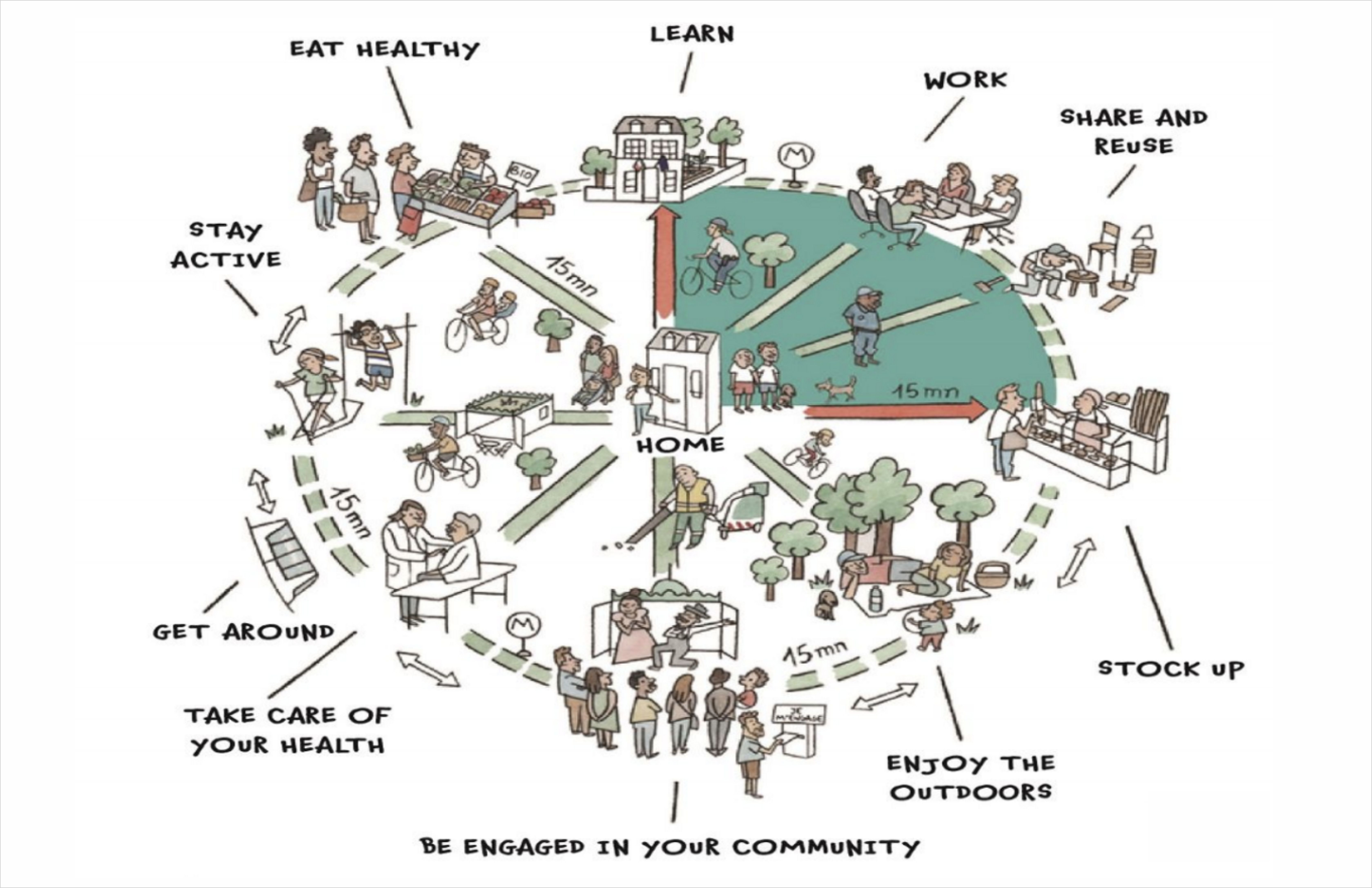There is no doubting that the pandemic significantly affected our ways of communicating, travelling, consuming and interacting. Congested cities like London, New York, Paris, Athens and, to some extent, Nicosia are operating differently, and the social interaction between individuals has changed, as we work to establish new perspectives on the post-pandemic world.
The pandemic shook up our daily grind and made us pay attention to details that were frequently ignored. Rarely did we go to local stores, interact with our closest family or neighbours, or even go to nearby parks or recreation areas. It was only a matter of time before a fresh approach to urban planning would emerge, promising to strengthen communities and improve quality of life for residents.
Enter Franco-Columbian urbanist Carlos Moreno, the driving force behind Paris’ 15-minute city plan. Moreno, who also serves as Paris City Hall’s special ambassador for smart cities, contends that his idea of building cities where everything a person needs can be obtained within 15 minutes on foot or by bicycle will significantly enhance the quality of life of its citizens.
The 15-minute city requires minimal travel among housing, offices, restaurants, parks, hospitals and cultural venues. Each neighbourhood should fulfil six social functions: living, working, supplying, caring, learning and enjoying.
The most sensible reaction to the ever-expanding urban developments that are isolating those living on the periphery is Moreno’s notion, which is also seen as a response to climate issues, increasing green initiatives at neighbourhood level and minimising travel.
“The pandemic kicked off a trend towards localisation, which is why the 15-minute city is now on the agenda of metropolitan regions throughout the world,” Moreno said.
“I also think that cities should be freed from the business restrictions that make it challenging to open small shops and cafés in residential neighbourhoods,” he added.
According to Moreno, one of the greatest blessings of urban entrepreneurship is a vibrant mixed-use neighbourhood that will also be beneficial for the economy. “Making an area more pedestrian-friendly can raise foot traffic to retail stores that are adjacent to the street by up to 40 per cent, increase turnover by up to 25 per cent, and boost commercial activity in city centres by up to 30 per cent.
“An additional advantage is that, compared to visitors arriving by car, pedestrians and those on bicycles tend to spend more money per month in retail districts.” Moreno’s argument suggests that investing in the standard modes of transportation in the 15-minute city – walking, biking, and using a wheeled vehicle – can provide strong returns on investment and several benefits for every euro spent.
“Businesses could be able to rebound from the economic downturn brought on by the pandemic if these walkable high streets are created using a 15-minute city strategy.”
Several, however, believe that for the 15-minute city concept to be a useful and fair model for building better communities after the pandemic, it must be critically executed and work through its weaknesses. Equity is a major issue, since well-intentioned initiatives to make neighbourhoods walkable, mixed-use, and accessible within a 15-minute drive of home can lead to gentrification that drives poorer residents out of the city and into less walkable places. Low-income households will lose out on the advantages of living in a 15-minute neighbourhood because of these places being geared towards high-consumption lifestyles.
Moreover, some doubters contend that the underlying idea of a 15-minute city is not actually a city at all. It is a subdivision in a ghetto or an enclave. Neighbourhoods should be connected and arranged as an archipelago throughout all cities, and everyone should be able to communicate with one another in the cities, regardless of their age, colour, gender, religion or economic background. If not, they are unable to fulfil their most fundamental purpose, and cease to be locations of opportunity.
The 15-minute city does not actually aim to keep people inside. Instead, the goal is to create affluent neighbourhoods where individuals can access services without having to go far; this does not imply that one is confined to one’s current location.
There is still a long way to go before our streets and neighbourhoods are places for everyone, and movements fuelled by conspiracy theories run the risk of slowing these transitions and stirring up irrational fears. Nevertheless, this new idea is gaining ground as a powerful strategy for promoting urban sustainability transitions.







Click here to change your cookie preferences